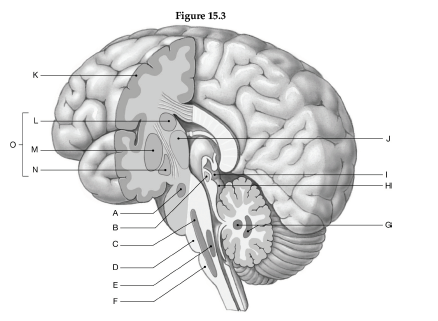Match the type of breathing with its description.
1. cessation of breathing
2. increased respiratory rate and/or volume without increased metabolism
3. increased respiratory rate and/or volume due to increased metabolism
4. rapid breathing
5. difficulty breathing
A. hyperpnea
B. hyperventilation
C. tachypnea
D. dyspnea
E. apnea
1. E. apnea
2. B. hyperventilation
3. A. hyperpnea
4. C. tachypnea
5. D. dyspnea
You might also like to view...
An ectopic pacemaker is an area of the myocardial conducting system, other than the atrioventricular node, that initiates cardiac depolarization.
Answer the following statement true (T) or false (F)
Using the figure below, identify the labeled part.

1) Label A: ______________________________
2) Label B: ______________________________
3) Label C: ______________________________
4) Label D: ______________________________
5) Label E: ______________________________
6) Label F: ______________________________
7) Label G: ______________________________
8) Label H: ______________________________
9) Label I: ______________________________
10) Label J: ______________________________
11) Label K: ______________________________
12) Label L: ______________________________
13) Label M: ______________________________
14) Label N: ______________________________
15) Label O: ______________________________
This organ's stroma is composed of hormone-secreting epithelial cells.
A. Liver B. Spleen C. Appendix D. Thymus
All covalent bonds are polar
Indicate whether the statement is true or false.